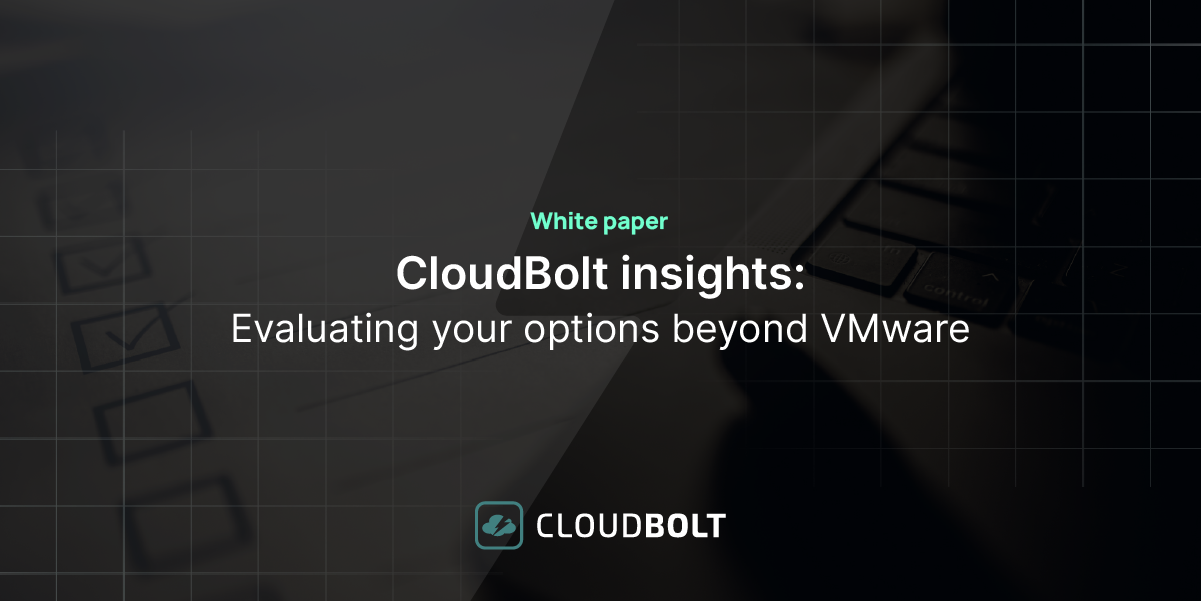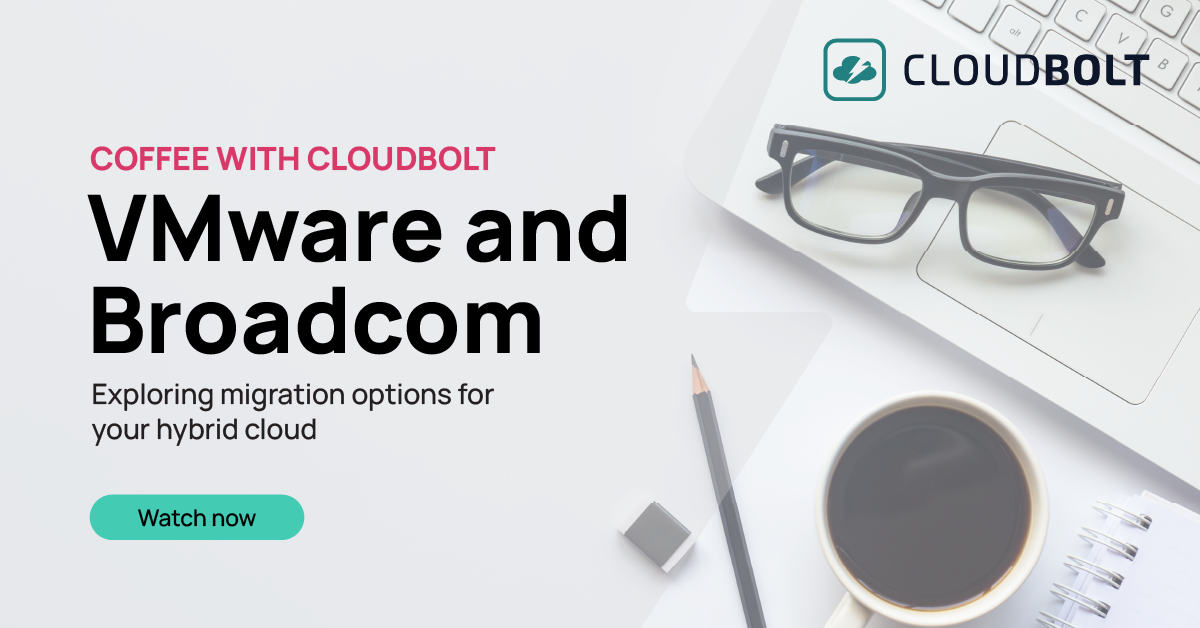
Today’s digital world thrives on constant updates, and keeping pace with user demands often feels like a continual uphill battle. Optimizing infrastructure to meet changing needs while minimizing expenses requires flexibility and resourcefulness. Security regulations add another layer of complexity to navigate.
The technology industry is implementing automation across its software development and infrastructure life cycle workflows to meet these challenges.
This article discusses the different stages of infrastructure operations and lists some commonly used tools that can help you in your automation journey. We share some challenges and the best practices to help you overcome those challenges and achieve your goals.
Summary of key infrastructure automation concepts
| Concept | Description |
| Infrastructure operations | Infrastructure has different stages of operations, including design (Day 0), deployment (Day 1), and maintenance (Day 2). |
| Automation tools | Different tools can be used for different stages: MAAS for Day 0, Terraform for Day 1, and Ansible for Day 2. CloudBolt can integrate various tools and provide a unified IT dashboard. |
| Challenges of automation | Some of the challenges in the automation journey include the learning curve of new technologies, the sprawl of disconnected tools, legacy infrastructure lacking standard interfacing, and security concerns. |
| Best practices for automation | Start with simple steps and do experiments, define your objectives, and develop a strategy for meeting your goals. Emphasize training and skill development, standardize the infrastructure, and create guardrails for compliance. |
Understanding infrastructure operations
Digital infrastructure is the foundation that enables digital communication, data processing, and information management. It is the backbone that supports our business operations and communication systems.
This infrastructure can be on-premises or on the cloud. It can include physical hardware devices like servers, routers, switches, firewalls, and storage devices. The infrastructure can also be virtual, like VMs or compute instances, block or object storage, and security groups. Infrastructure can be a complete physical data center or a virtual private cloud (VPC).
These different infrastructure components have various interfaces for performing operations and maintenance. When starting your automation journey, you must plan for the right tools and utilities that are capable of interfacing with different components. The servers are generally managed via SSH, but network equipment might require a NetConf or SNMP interface. Cloud providers typically provide APIs for integration with automated provisioning tools.
IT and cloud operations automation are broken down into different stages of the infrastructure lifecycle. There are some variations in definitions of lifecycle among various vendors, but they are generally categorized as follows:
- Day-0 operations:
- System architecture and design
- Initial infrastructure turnup
- Day-1 operations:
- Deployment of software and configurations
- Initial system testing and validation
- Day-2 operations:
- Monitoring and alerts
- System patches and updates
- Configuration changes
- Backups and recovery
Different stages of the infrastructure lifecycle require different strategies and tools: No single tool will meet all the requirements and interface with all the different hardware and cloud providers. Automation tools should align with budgets, especially in the case of cloud operations. Most importantly, the automation technology must ensure adherence to security, governance, and compliance requirements.
In the following sections, we discuss different strategies and tools that can be used to meet these challenges.
“Suddenly, I can offer an engineer productivity! Where it used to take them roughly 40 hours to build up a system to overlay their tools, I deliver all of that in minutes with CloudBolt.”
Automation tools and technologies
Many infrastructure automation tools are available, all with different capabilities and strengths. Most modern organizations use various tools for different infrastructure automation and operational stages. Here are some commonly used automation tools and their abilities and use cases.
Metal as a service (MAAS)
MAAS is a data center automation tool that was developed by Canonical and is available as open-source software. It has a centralized web-based management and monitoring interface that provides cloud-like provisioning and management capabilities for bare-metal servers.
One of the key features of MAAS is that it allows bare metal servers to boot via network interfaces and load the operating system using its DHCP service and PXE booting capability. This allows you to perform Day 0 operations of the data center with the initial deployment of Ubuntu and other supported distributions on bare metal servers.
Terraform
Terraform is an infrastructure automation tool developed by HashiCorp that can interact with both on-prem and cloud providers to manage the infrastructure lifecycle. Using plugins, Terraform can manage the operations on different platforms via their APIs.
Terraform Registry provides over 1,000 plugins, called providers, that can interact with AWS, Azure, GCP, OpenStack, and many more. For Day 1 operations, Terraform can deploy virtual machines, define VPCs and subnets, perform network configurations, attach block storage to instances, define an S3 bucket resource with access control lists (ACLs), and create security groups and firewall rules.
Ansible
Ansible is an open-source infrastructure automation utility sponsored by RedHat that can do application installation, configuration changes, and network configuration on servers and routers. As an agentless utility, Ansible is commonly deployed on a central node called the control node, which uses SSH to connect with hosts to perform the required operations.
Ansible is widely used for Day 2 operations to automate infrastructure management and operations. Some examples of operations include the installation of application packages on machines, performing configuration changes, and updating network settings and firewall rules.
CloudBolt
CloudBolt is a multi-cloud management platform that can help deploy and manage infrastructure across multiple public clouds and on-premises data centers. CloudBolt can integrate with other automation tools, like Terraform and Ansible, providing easy-to-use and complete self-service IT automation via command line and graphical user interfaces. The platform allows you to create blueprints that can be used to perform standardized deployments in a complex and hybrid infrastructure environment. This capability allows for enforcing security, FinOps, compliance, and governance policies consistently across the enterprise while expanding the user base to include less technical users who aren’t comfortable with typing code in tools like Terraform but still want to manage their application environments.
The platform provides hundreds of security checks for meeting the security and compliance requirements of IT infrastructure. Through a unified cost management platform, CloudBolt also helps with advanced FinOps to offer visibility and perform cost optimizations across diverse cloud providers.
Challenges in infrastructure automation
While infrastructure automation brings many benefits, as discussed above, many organizations are struggling with proper implementation. There are many challenges to achieving the full potential of automation:
- It is a new way of doing things, creating a learning curve for the technical team. Also, different stages of automation require different sets of tools, which creates even more complexity in the automation journey.
- There can be resistance to change due to a lack of understanding and even fear of job replacement (“robots may take over”).
- Automation is challenging in environments with legacy systems or platforms. Such systems often lack API or management interfaces that can be used to integrate with the automation platforms. For example, MAAS requires bare metal servers to have PXE boot capability to load operations systems, Ansible requires specific versions of Python on the control node and the managed nodes, and Terraform needs particular versions of the API for cloud providers to be able to perform infrastructure provisioning.
- IT infrastructure often goes through different stages of evolution, creating islands of technology that lead to the sprawl of many disconnected tools. This can happen for historical reasons: A company might have acquired a particular technology, or you might have to support a legacy application with its integration and automation tools. For example, the application team might use Chef, while the DevOps team uses Puppet. The infrastructure team might use Terraform to perform infrastructure deployment, but the OS team uses Ansible to perform automated configuration management. These tools are not directly integrated to achieve smooth IT infrastructure operations.
- You must integrate security credentials into your automation process when using machines to perform automation. This creates a very legitimate security concern of exposing credentials in automation scripts. As an example, for Terraform to be able to manage infrastructure on AWS, you need to pass IAM credentials. The AWS secrets should never be stored in plain text files, which would create a significant security risk.
“Developers are overwhelmed by the amount of security configurations that are needed to secure the cloud…they no longer have to be security experts or worry about creating vulnerabilities for the organization.”
Best practices for infrastructure automation
Start with baby steps, experimentation, and a proof of concept
Starting the automation journey can be a daunting task, so it helps if you start with baby steps. You can pick one simple task to get the feel of the tools, such as creating a single machine on AWS using Terraform—just a few lines of code. Next, add a floating IP to the machine. The step after that could be to manage the security group attached to the machine.
Another example is using Ansible to install a web server on a Linux machine. You can experiment with the different automation tools and create a proof of concept. These experiments will help you decide on the right tools for your automation journey.
Define objectives and create a strategy
With a proof of concept done, you will better understand how you would like to proceed. You should now start defining your infrastructure automation goals, objectives, and strategies to meet those objectives.
Break your objectives into smaller milestones and start completing them. These will help you gauge your progress better and provide a sense of completion at each milestone.
As discussed above, the high-level goals of infrastructure automation are efficiency, scalability, consistency, and compliance. The objectives you would like to achieve are automated provisioning and deployment, configuration management, service orchestration, security and compliance automation, and cost and resource optimization.
You can pick one application and bring the application lifecycle into your automation journey. Say you have a CRM application with a web service. You may start with Day 2 operations, which are the most repetitive actions. First, you create an Ansible playbook to install the web server (Apache, Nginx, etc). Next, you can add configuration options to the automation scripts, like web root directory, SSL certificate paths, and service listening ports. The following step could be pulling your code from a Git repository.
Keep following an iterative process with continuous improvement until you achieve your goals and objectives.
Training and skill development
Your team needs to be on board from the start of your automation journey. This requires updating the team’s skill set using appropriate training and development programs.
You must provide a theoretical foundation with introductory courses on automation platforms with appropriate documentation. Conduct hands-on workshops where the team can practice using IaC tools in a controlled environment. Set up lab exercises and guide them as they work through real-world scenarios.
You can create scenarios to simulate some of the real-world challenges. This could include tasks like scaling infrastructure, handling security configurations, or managing complex application deployments.
Use a standardized operating environment
When you start creating your playbooks and automation scripts, it always helps to have a standardized operating environment. The fewer variations you have, the fewer exceptions you must configure into your automation processes.
An example might be that all your servers use Ubuntu 22.04 as the OS and Apache 2.4 as the standard web server. You might require that SSH logins be enabled only with SSH keys and the root login disabled.
In a standard operating environment, everything is created and modified in a well-defined, documented, and standard way. This helps you achieve scalability, reliability, and security.
“We were surprised at how few vendors offer both comprehensive infrastructure cost management together with automation and even governance capabilities. I wanted a single solution. One vendor to work with.”
Employ guardrails for security and compliance
As we have been discussing, security and compliance are two of the key goals of infrastructure automation. You must define your security checks and compliance policies as part of your automation processes. Some examples of such guardrails are as follows:
- Configuration compliance: The application and server configurations must comply with the security baselines.
- Access control: Proper checks and access controls are implemented to prevent unauthorized access.
- Encryption checks: Automated checks are used to ensure proper implementation of SSL/TLS configurations.
- Logging and monitoring: All production workloads must be integrated with centralized performance and event monitoring platforms.
You must ensure that these checks or guardrails are incorporated into your workflows so that security is inherently built into all your infrastructure deployments. As an option, you can use the capabilities of solutions like the CloudBolt Cost and Security Management Platform (CSMP), which has over 300 security checks. You can use these checks to comply with regulations like CIS or PCI-DSS.
Global automation with a unified platform
Large enterprises often have different automation tools used by various teams or tools for specific stages of infrastructure operations. These organizations require a solution to aggregate all these individual tools for unified and single-window operations.
CloudBolt can integrate tools (like Terraform, Ansible, Chef, and Puppet) and create a centralized IT dashboard across the organization. This layer of unification reduces the learning curve and provides self-service automation. Less technical application owners can make changes using CloudBolt Dashboard UI to apply standardized policies across all applications for security compliance or financial management.
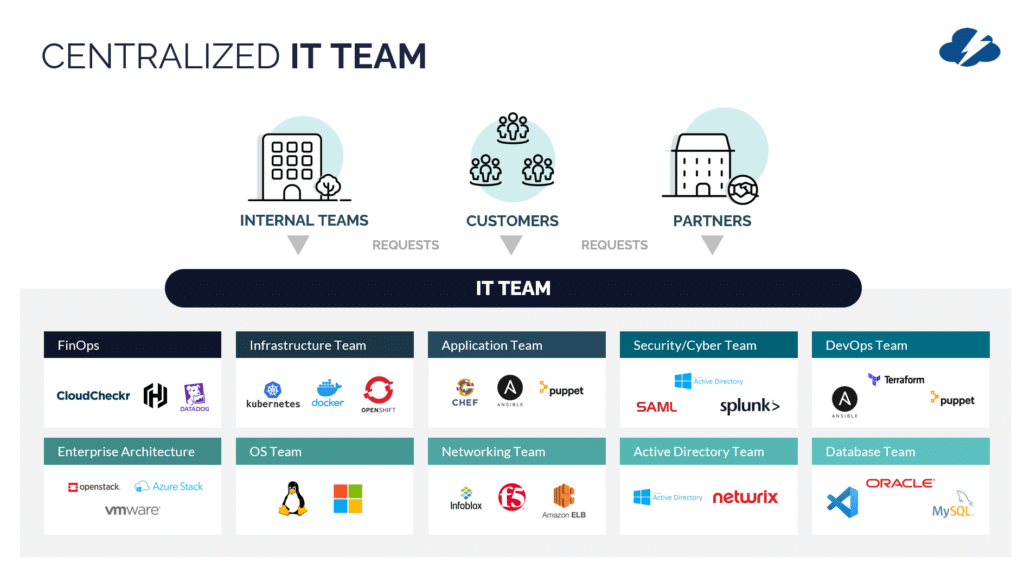
Workflow automation
When organizations start to grow, they develop multiple teams for design, development, deployment, and operations. With multiple teams comes the challenge of inter-team coordination for efficient, consistent, and automated workflow, including creating standard operating procedures (SOPs). For example, you need to define how a service request will be submitted, what process will be followed for deploying the required systems and applications, and how the security checks and compliance will be met. You must also meet each workflow stage’s key performance indicators (KPIs).
CloudBolt helps automate workflow and perform efficient handover across different teams. The platform can perform automation at each stage to increase efficiency and security for a more consistent application delivery experience.
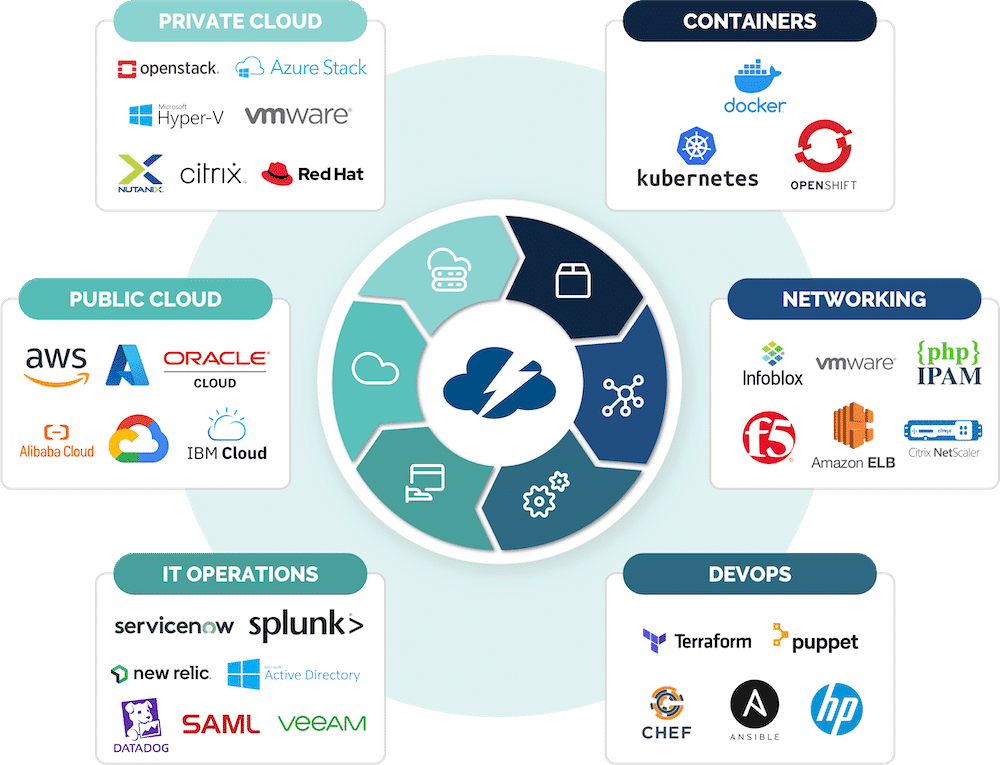
Summary of key concepts
Infrastructure automation helps organizations meet security and compliance requirements and increases efficiency and productivity. It brings consistency into workflows and reduces human error, resulting in scalability and flexibility with cost savings and resource optimization. To get all these benefits, it’s necessary to follow the best practices of defining goals, milestones, and targets, utilizing the right tools for the right job, standardizing infrastructure components, ensuring adequate training and skill development, and implementing guardrails.
Related Blogs

The New FinOps Paradigm: Maximizing Cloud ROI
Featuring guest presenter Tracy Woo, Principal Analyst at Forrester Research In a world where 98% of enterprises are embracing FinOps,…
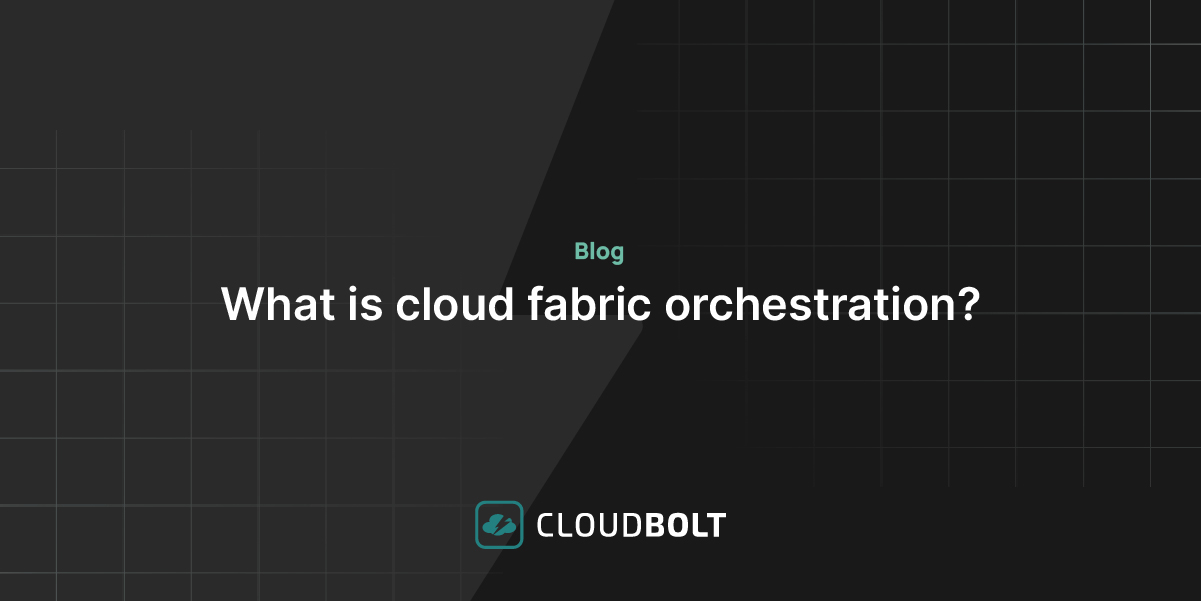
What is cloud fabric orchestration
Understanding the Cloud Fabric Before diving into the intricacies of cloud fabric orchestration, let’s first understand what we mean by…



